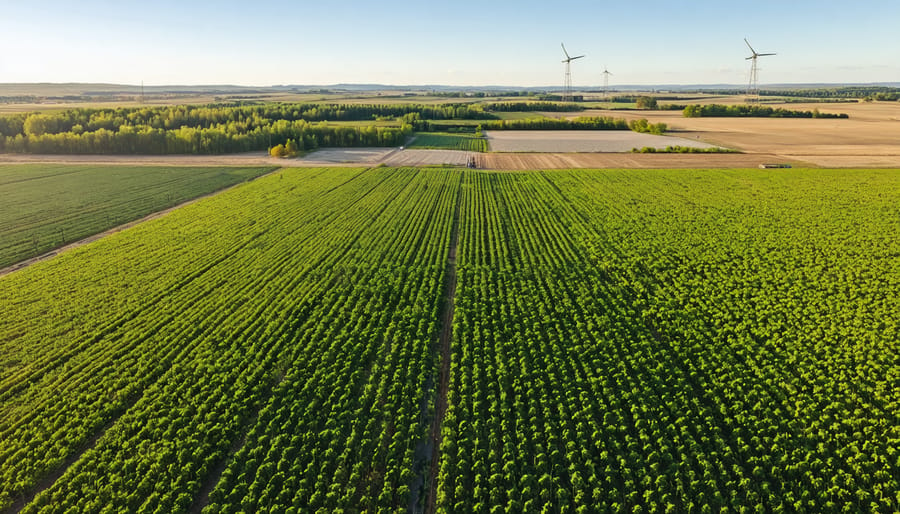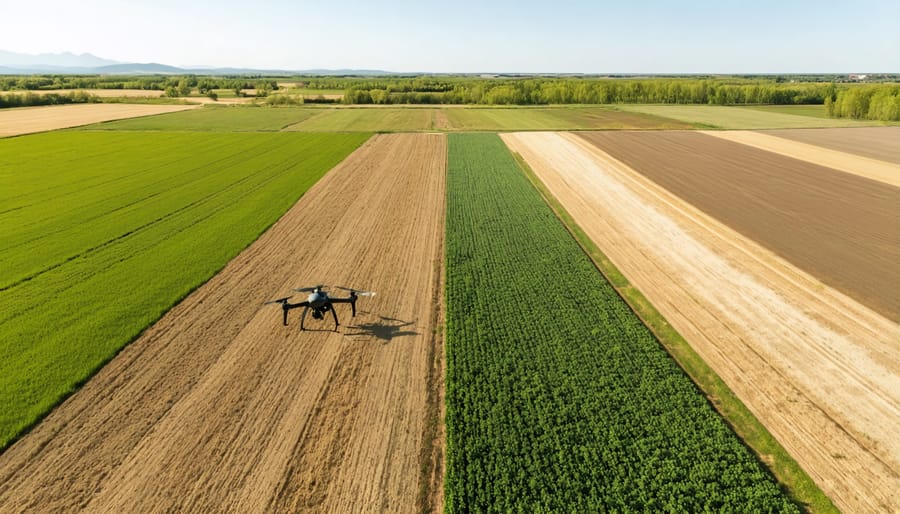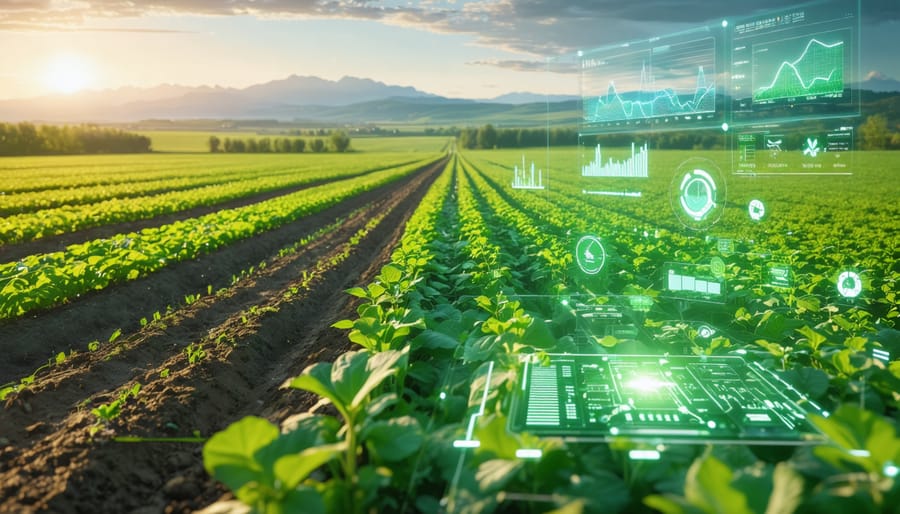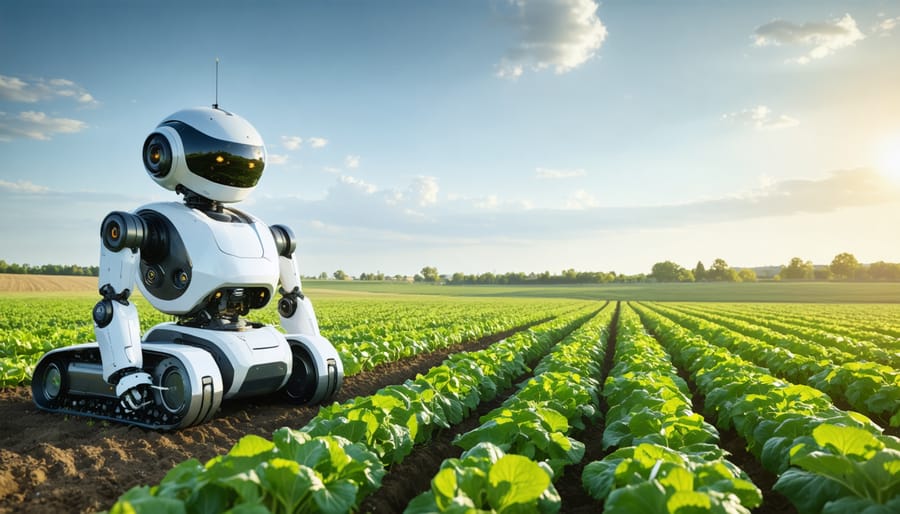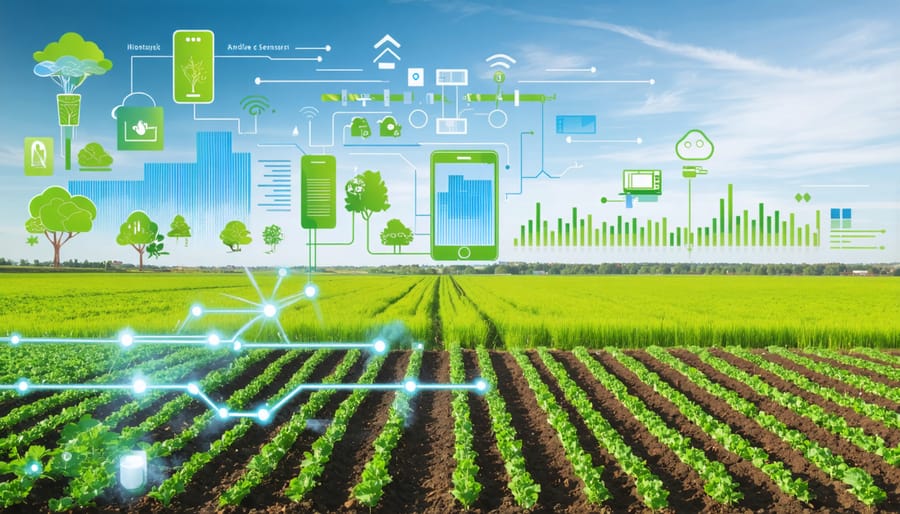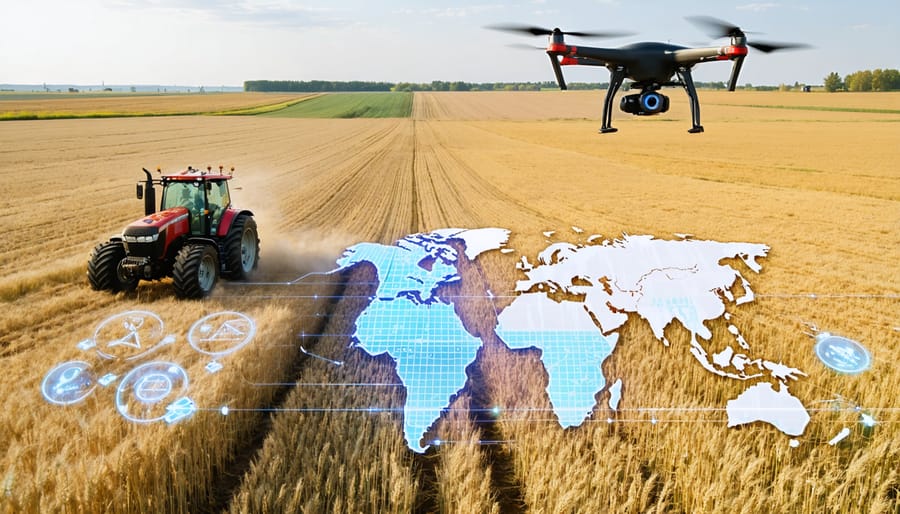Transform your organic farm into a thriving digital ecosystem by integrating secure digital farm management tools with traditional agricultural practices. Implement multi-layered cybersecurity protocols to protect soil sensors, automated irrigation systems, and yield monitoring devices while maintaining organic certification compliance. Create resilient farming networks by connecting with neighboring producers through encrypted communication channels and shared data management systems that respect privacy regulations.
Modern ecosystem farming demands both environmental and digital stewardship. Alberta’s leading organic producers demonstrate how secure technology integration strengthens soil health monitoring, optimizes resource allocation, and enhances crop rotation planning while safeguarding sensitive farm data. By building digital infrastructure that mirrors natural ecosystem principles, Canadian farmers establish operations that are both technologically advanced and ecologically sound.
This innovative approach combines time-tested organic methods with cutting-edge digital protection, creating farming systems that are productive, sustainable, and secure. Local success stories show that properly protected smart farming technologies can increase yields by 15-20% while maintaining strict organic standards and data sovereignty.
Building Your Farm’s Digital Defense Ecosystem

Core Components of Farm Security Ecosystems
In today’s digital farming landscape, protecting your agricultural operation requires a well-structured security ecosystem that safeguards both traditional and precision agriculture technologies. Essential components include robust network infrastructure, data management systems, and access control protocols specifically designed for farm environments.
Start with a secure local network that connects your farm’s digital tools while remaining isolated from potential threats. This typically involves installing commercial-grade routers with built-in firewalls and creating separate networks for guest access and critical farm operations. Many Alberta farmers have found success using mesh networks to ensure reliable connectivity across large properties.
Data backup systems are crucial for protecting soil analysis records, crop rotation plans, and certification documentation. Consider implementing a hybrid approach with both local and cloud storage solutions, ensuring your farm’s vital information remains accessible even during network outages.
Access management systems help control who can view and modify your farm’s digital assets. This includes biometric authentication for critical systems and role-based access for employees, contractors, and family members involved in farm operations.
Environmental monitoring systems serve dual purposes – tracking growing conditions while alerting you to potential security breaches. Modern sensor networks can detect unusual activity in sensitive areas while collecting valuable agricultural data.
Remember to include physical security measures that protect your digital infrastructure. This means securing server rooms, protecting outdoor sensors, and maintaining backup power systems for critical equipment.
Many successful Canadian organic farms have found that joining regional farming technology cooperatives helps share security resources and expertise, making comprehensive digital protection more accessible and cost-effective for everyone involved.
Alberta Success Story: The Connected Farm Network
The Stettler County Connected Farm Network stands as a shining example of how ecosystem farming can transform agricultural communities. Started in 2019 by a group of 12 family farms, this initiative has grown to include over 75 interconnected operations across central Alberta.
Sarah MacDonald, a third-generation farmer and network co-founder, explains: “We began by sharing our soil health data and weather monitoring systems. Today, we’re operating a sophisticated network that includes everything from automated irrigation controls to pest detection systems.”
The network’s success lies in its collaborative approach. Participating farms contribute to a centralized data hub, which helps identify patterns in soil conditions, pest movements, and weather impacts across the region. This shared intelligence has led to a 30% reduction in pesticide use and a 25% improvement in water efficiency across member farms.
The initiative has also fostered strong community bonds. Monthly meetings allow farmers to share insights and troubleshoot challenges together. The network provides training sessions for new members and mentorship opportunities for young farmers interested in sustainable agriculture.
“What makes this work is that we’re not just sharing technology – we’re sharing knowledge and supporting each other,” notes Tom Chen, agricultural technology specialist at the University of Alberta. “The network has created a resilient farming ecosystem that benefits both the environment and our community’s economic stability.”

Securing Smart Farming Technologies
IoT Device Protection
Protecting your farming IoT devices is crucial in modern agricultural operations. As more farms implement smart sensor networks and automated systems, maintaining robust security becomes essential. Here in Alberta, we’ve seen successful implementations of multi-layered security approaches that work well for our farming community.
Start by ensuring all devices have strong, unique passwords and enable two-factor authentication where possible. Regular firmware updates are vital – consider setting aside time each month to check and update your systems. Many local agricultural tech providers offer automated update services tailored to Canadian farming operations.
Create a separate network specifically for your IoT devices, keeping them isolated from your main farm management systems. This practice, known as network segmentation, is particularly effective in preventing potential security breaches from affecting your entire operation.
Consider working with local agricultural technology specialists who understand both the technical requirements and the unique challenges of Canadian farming environments. They can help implement appropriate security measures while ensuring your systems remain practical and efficient for daily operations.
Data Collection and Storage Safety
Protecting your farm’s data is as crucial as safeguarding your physical assets. While modern farm management software solutions offer tremendous benefits, they also require careful attention to data security.
Start by implementing strong passwords and two-factor authentication for all your digital systems. Keep separate backups of critical farm data, including yield records, soil testing results, and financial information, storing them both locally and in secure cloud storage. Consider using encrypted storage devices for sensitive information.
When sharing data with partners or service providers, use secure file transfer methods and ensure you have clear data-sharing agreements in place. Regularly update your software and systems to patch security vulnerabilities, and train all farm staff on basic cybersecurity practices.
For Alberta farmers, the Alberta Farm Fresh Producers Association offers workshops on data protection specifically tailored to local agricultural needs. Remember to regularly review and update your data protection strategies as technology evolves and new threats emerge.
Environmental Monitoring Systems Security
Modern farming relies heavily on environmental monitoring systems to track crucial data about soil conditions, water usage, and weather patterns. Protecting these systems from cyber threats is essential for maintaining the integrity of your ecosystem farming operation.
Here in Alberta, we’ve seen how local farmers are implementing robust security measures to safeguard their monitoring equipment. For instance, the Peterson Family Farm in Lacombe uses encrypted sensors and secure data transmission protocols to protect their soil moisture readings and weather station data.
Start by securing your base station with strong passwords and regular software updates. Many Alberta farmers are now using two-factor authentication for accessing their monitoring dashboards. Keep all monitoring devices on a separate network from your personal devices and office computers.
When it comes to wireless sensors in the field, ensure they’re using encrypted communications. Regular physical inspections of monitoring equipment can help detect any tampering or unauthorized devices. Consider installing security cameras near critical monitoring stations, particularly those near public roads or property boundaries.
Backup your monitoring data regularly and store it in multiple secure locations. Several farming cooperatives in central Alberta have established data-sharing networks that help members maintain secure backups while building community resilience.
Remember to train all farm staff on proper security protocols. Simple measures like changing default passwords on new equipment and being cautious about sharing access credentials can prevent most security breaches. The Alberta Farm Fresh Producers Association offers regular workshops on cybersecurity basics for monitoring systems.
By protecting your environmental monitoring systems, you’re not just securing data – you’re safeguarding the foundation of your ecosystem farming practice.
Community-Based Security Solutions
Canadian organic farmers are increasingly recognizing the power of collaborative security measures to protect their digital operations. Across Alberta and other provinces, farming communities have established local cybersecurity networks where members share threat intelligence, best practices, and resources. These grassroots initiatives have proven particularly effective in smaller communities where individual farmers might lack the resources for comprehensive security systems.
The Prairie Digital Security Coalition, for example, connects over 200 organic farmers across Western Canada, offering peer support and coordinated responses to cyber threats. Members regularly participate in virtual workshops to learn from each other’s experiences and stay updated on emerging security challenges.
Many communities have also implemented shared monitoring systems, where neighboring farms collectively invest in security infrastructure and divide monitoring responsibilities. This approach not only reduces costs but also strengthens community bonds and creates a more robust security network.
Local agricultural cooperatives are taking the lead in organizing regular security audits and providing training sessions. These collaborative efforts ensure that even smaller operations can maintain strong digital defenses while fostering a supportive environment where farmers help each other navigate the complexities of modern agricultural technology.

Ecosystem farming represents a transformative approach that’s already making waves across Alberta and beyond. As we’ve seen through local success stories, this holistic method of agriculture not only enhances soil health and biodiversity but also strengthens farm resilience and profitability. Looking ahead, the growing support from agricultural extension services and increasing consumer demand for sustainably produced food suggests a bright future for ecosystem farming in Canada. By embracing these practices, our farming communities are well-positioned to lead the way in sustainable agriculture while maintaining productive, profitable operations. Remember, every step toward ecosystem farming, no matter how small, contributes to a more sustainable and resilient agricultural future. Together, we can build farming systems that work in harmony with nature while supporting our rural communities for generations to come.



